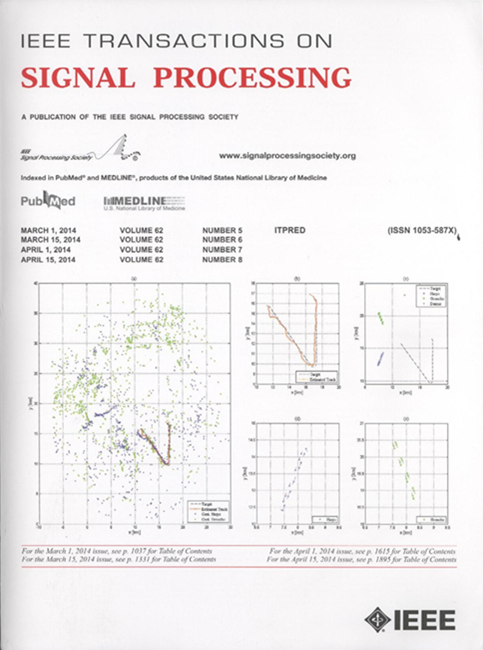Achievable Rate Maximization in MIMO-BICM Systems: A Unified Transceiver Design
IF 5.8
2区 工程技术
Q1 ENGINEERING, ELECTRICAL & ELECTRONIC
引用次数: 0
Abstract
Transceiver designs for multiple-input multiple-output (MIMO) systems have been extensively studied in the past decades. However, in the context of finite constellation inputs, existing transceiver designs do not guarantee optimal performance across all SNR ranges or varying code rates. In this paper, we propose a novel maximum achievable rate transceiver (MART) design for bit-interleaved coded modulation in MIMO (MIMO-BICM) systems. Our proposed MART scheme combines channel matrix decomposition and decision feedback equalization (DFE), decomposing the MIMO channel into multiple parallel subchannels. We establish a tight lower bound for achievable rates in MIMO-BICM, based on which we transform the sophisticated problem to the optimization of the output signal-to-noise ratios (SNRs) of subchannels. We consider the achievable rate maximization under both zero-forcing (ZF) and minimum mean-square error (MMSE) criteria and provide a unified solution framework for both two problems. To simplify the optimization process, we further propose an alternative near-optimal scheme for both ZF and MMSE problems. Numerical results show the optimality of the proposed MART scheme across all SNR ranges, demonstrating its potential in practical MIMO-BICM systems.MIMO-BICM系统中可实现的速率最大化:一个统一的收发器设计
在过去的几十年里,多输入多输出(MIMO)系统的收发器设计得到了广泛的研究。然而,在有限星座输入的情况下,现有的收发器设计不能保证在所有信噪比范围或不同码率下的最佳性能。在本文中,我们提出了一种新的最大可达速率收发器(MART)设计,用于MIMO (MIMO- bicm)系统中的位交错编码调制。我们提出的MART方案结合了信道矩阵分解和决策反馈均衡(DFE),将MIMO信道分解为多个并行子信道。我们建立了MIMO-BICM中可实现速率的严格下界,在此基础上,我们将复杂问题转化为子通道输出信噪比(SNRs)的优化。我们考虑了零强迫(ZF)和最小均方误差(MMSE)两种标准下可实现的速率最大化,并为这两个问题提供了统一的求解框架。为了简化优化过程,我们进一步针对ZF和MMSE问题提出了一种替代的近最优方案。数值结果表明,该方案在所有信噪比范围内都是最优的,证明了其在实际MIMO-BICM系统中的潜力。
本文章由计算机程序翻译,如有差异,请以英文原文为准。
求助全文
约1分钟内获得全文
求助全文
来源期刊

IEEE Transactions on Signal Processing
工程技术-工程:电子与电气
CiteScore
11.20
自引率
9.30%
发文量
310
审稿时长
3.0 months
期刊介绍:
The IEEE Transactions on Signal Processing covers novel theory, algorithms, performance analyses and applications of techniques for the processing, understanding, learning, retrieval, mining, and extraction of information from signals. The term “signal” includes, among others, audio, video, speech, image, communication, geophysical, sonar, radar, medical and musical signals. Examples of topics of interest include, but are not limited to, information processing and the theory and application of filtering, coding, transmitting, estimating, detecting, analyzing, recognizing, synthesizing, recording, and reproducing signals.
 求助内容:
求助内容: 应助结果提醒方式:
应助结果提醒方式:


